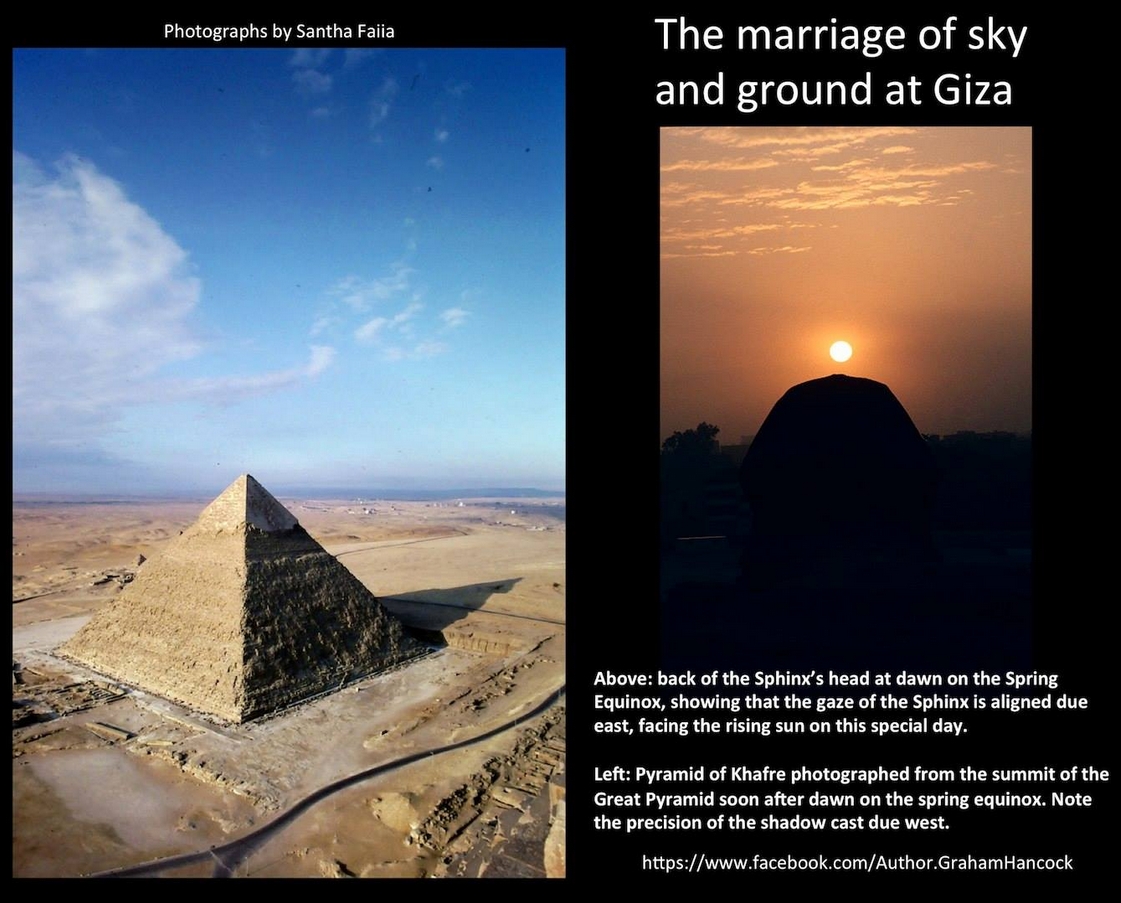Thank you, Graham, for this superb pair of photographs from Santha and your following text:
Egypt’s Giza plateau, site of the Great Pyramids and the Great Sphinx, is a magical place speaking in many different ways to the ancient dictum “As Above So Below”. These photos by my wife Santha were both taken around dawn on the Spring Equinox — though in different years. The Spring Equinox, 21 March in the northern hemisphere, is one of the two points in the year (the other is the autumn equinox, 21 September) when night and day are of exactly equal length and when the sun rises perfectly due east. As the photos show the marriage of sky and ground on these special days is celebrated at Giza by the due-east alignment of the Great Sphinx, targeting the rising sun, and by the perfect north-south-east-west alignments of the pyramids which act as giant gnomons casting their shadows due west as the light brightens after dawn. Between the spring equinox and midsummer (21 June) the rising point of the sun moves increasingly north of east along the horizon so that these alignments and shadow effects are not seen. Between the autumn equinox and midwinter (21 December) the rising point of the sun moves increasingly south of east and again these alignments are not seen. Only at the Spring and Autumn Equinoxes can the special magic shown in these photographs be witnessed.
As you have described so eloquently elsewhere, the likely reason that a lion would be staring due East is to witness the heliacal rising of its corollary in the sky at the March equinox, the constellation Leo, which was about 10,000 years ago – just a tad while longer ago than modern Egyptology would have us believe…


Recent Comments